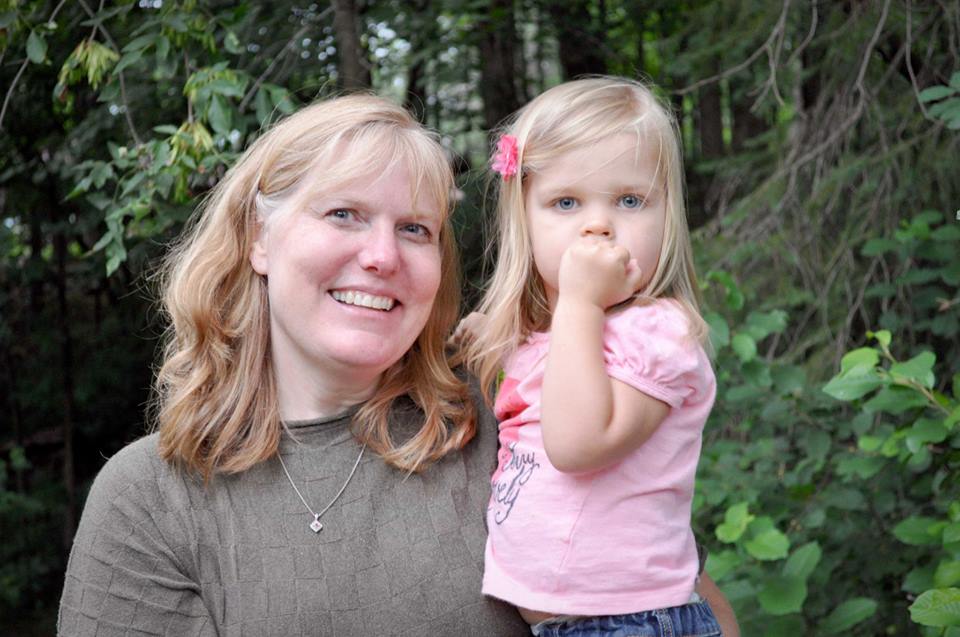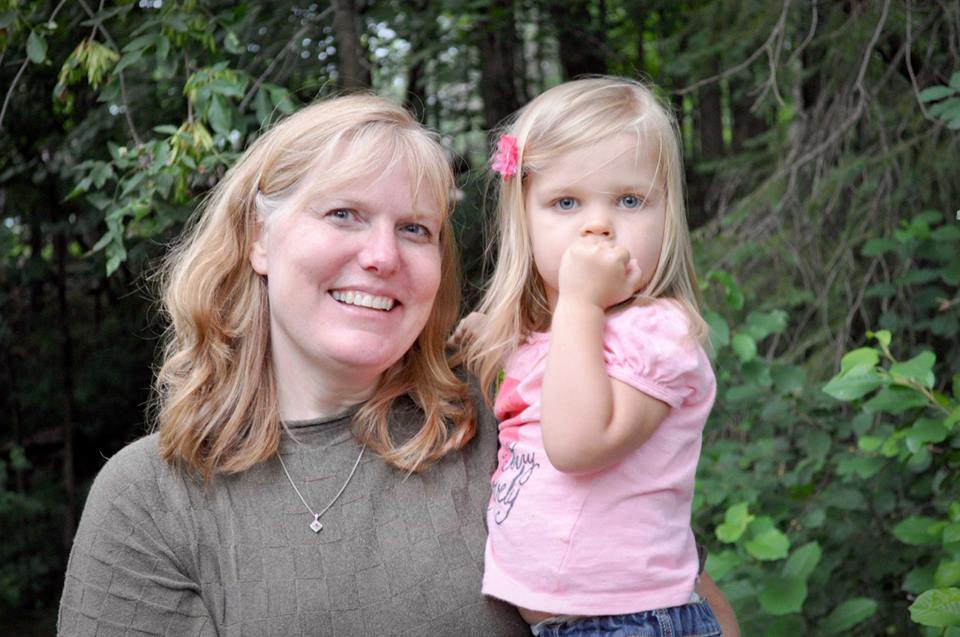 I remember the crisp autumn day the well-dressed early childhood professor from a nearby university came to spend the morning with LifeWays’ preschoolers. She was impressed with the way the children played outdoors, climbing trees, balancing on fallen logs, gathering acorns and telling stories with them, as comfortable and relaxed in their outdoor forest environment as most modern children are in their own living rooms.
I remember the crisp autumn day the well-dressed early childhood professor from a nearby university came to spend the morning with LifeWays’ preschoolers. She was impressed with the way the children played outdoors, climbing trees, balancing on fallen logs, gathering acorns and telling stories with them, as comfortable and relaxed in their outdoor forest environment as most modern children are in their own living rooms.
As our ragtag little group climbed the steep hill to go inside for a hot lunch of soup and homemade bread, we rounded the corner and came face-to-face with the jack-o-lantern that had once graced our table as a centerpiece, but had since been relocated to the forest as it began to get mushy and stinky, its smiling triangle eyes caving in as it decomposed. The visiting professor gasped and took a step backwards, then exclaimed, “Wow. That is one rotten pumpkin!” Three-and-a-half-year-old Giselle matter-of-factly remarked, “Nope. It’s compost!”
I smiled as I thought of Giselle’s remark recently while I was turning the compost pile at the farm. This particular compost pile was created by the eighth grade class from Wauwatosa Catholic School, who came to the farm in early May. I had emailed the teacher ahead of time to ask her to tell the kids that they would be building a compost pile, suggesting that those who were squeamish about manure might want to bring garden gloves. I was fully prepared that morning to face a group of surly adolescents who might be displeased about shoveling manure on their class field trip. Imagine my surprise when they practically skipped off the bus, smiling! They must not have been told, I thought to myself. As I led them back to the trailer full of horse manure, I put on my most enthusiastic face and inwardly prepared to combat the inevitable eye-rolling and complaining with good humor. The teens eagerly jumped into the trailer and began shoveling manure, carefully following the instructions of their farm teacher, Paul, to layer it with plenty of straw and garden waste, adding biodynamic compost starter as the pile grew higher and higher. The kids and their teachers worked earnestly until the pile was finished, and then stepped back to admire their work.
What is with these kids? I thought today’s teens couldn’t stand to be separated from their video games long enough to play outside, let alone jump into a trailer full of manure and start shoveling.
This is a question I’ve been thinking about a lot lately, as I turn the compost pile every two weeks or so. It takes some time to turn the compost by hand, so I have had plenty of time to ponder this and many other questions. I think this is one of the reasons I like doing it so much… it’s physical, repetitive, and meditative. As I work with the pile, I take note of all the materials and how they interact with one another. And as I watch the complex relationships developing and working in the pile, I begin to see why kids, young ones like Giselle or big ones like the eighth graders, intuitively “get” that composting is much more than a pile of decomposing waste.
The elements of earth, water, air and fire were identified by the ancient Greeks as the forces that govern all of life. Direct experiences with these elements can help children be more aware of and present in their bodies. It can give them a greater appreciation for who they are and their part in the natural world that surrounds them. The four elements are living in a very real and tangible way in the compost pile. What can we learn from compost about the natural world and our children?
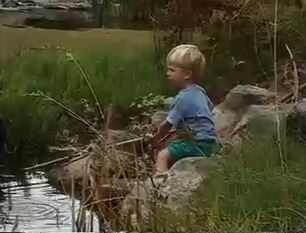 The earth element in the compost pile provides carbon from all the brown, crunchy stuff that used to be alive. Everything that is or once was alive contains carbon, which is why carbon dating is such a reliable method for testing the age of minerals and fossils. It provides the physical foundation of the compost pile, as our physical body does for us. I have observed that children who relate strongly to the earth element love to be outdoors in nature. They often delight in moving their physical bodies and challenging themselves to do adventurous things, connecting with the earth element within – their strong muscles and bones.
The earth element in the compost pile provides carbon from all the brown, crunchy stuff that used to be alive. Everything that is or once was alive contains carbon, which is why carbon dating is such a reliable method for testing the age of minerals and fossils. It provides the physical foundation of the compost pile, as our physical body does for us. I have observed that children who relate strongly to the earth element love to be outdoors in nature. They often delight in moving their physical bodies and challenging themselves to do adventurous things, connecting with the earth element within – their strong muscles and bones.
Water is essential to the compost pile. If you mixed everything together but didn’t add water, the pile would just sit there, stagnant. The water element is present in all things that are living; all life—plant and animal—must have water and the oxygen—the life force–it provides. I’ve noticed that children who relate strongly to the water element are often sensitive, with the potential to be very intuitive. They love to be in water and can stand at a sink of water pouring and playing for a very long time. The water element within them helps children flow through life – to move and create.
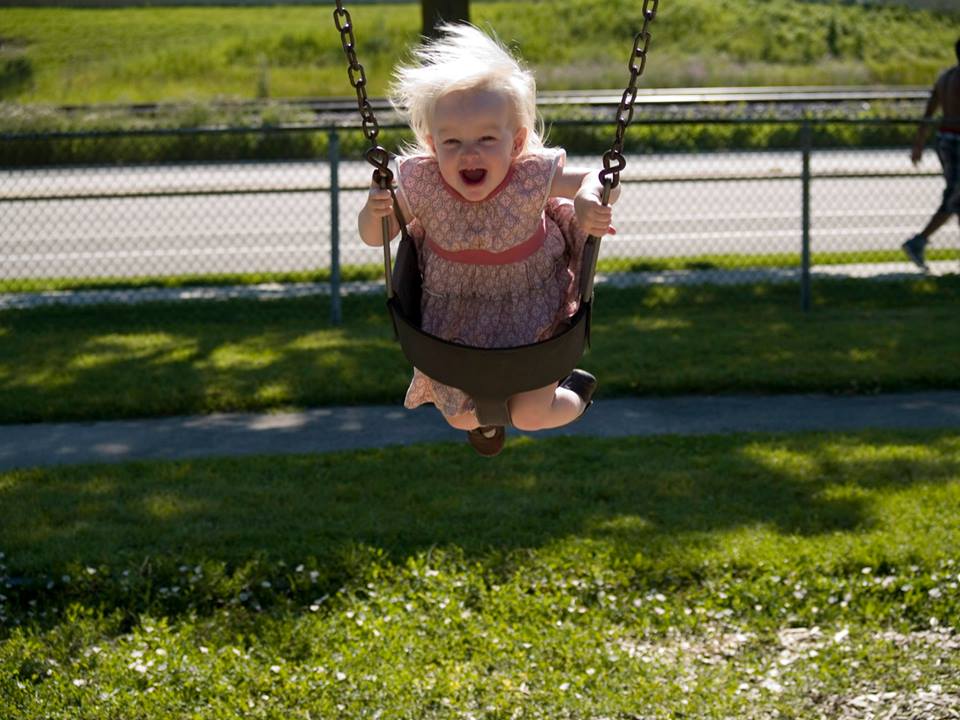 The air element in the compost pile comes from nitrogen. Did you know that the atmosphere is 80% nitrogen? It gives breath and life to the animal kingdom whose sensitivity and mobility differentiate the animals from minerals and plants. Because most of the nitrogen in the air is not in a form that is available to plants, one of the best nitrogen sources for our compost pile comes from the animal’s manure. It seems to me that children who relate strongly to the air element love to talk, as if they want to fill the air around them with their thoughts and ideas! The word “inspire” means to breathe in. The air element helps children find inspiration and a sense of awe in their daily lives.
The air element in the compost pile comes from nitrogen. Did you know that the atmosphere is 80% nitrogen? It gives breath and life to the animal kingdom whose sensitivity and mobility differentiate the animals from minerals and plants. Because most of the nitrogen in the air is not in a form that is available to plants, one of the best nitrogen sources for our compost pile comes from the animal’s manure. It seems to me that children who relate strongly to the air element love to talk, as if they want to fill the air around them with their thoughts and ideas! The word “inspire” means to breathe in. The air element helps children find inspiration and a sense of awe in their daily lives.
Finally, the fire element in our compost pile is epitomized by the sun, which is primarily made up of hydrogen. It is our human will that brings fire to the compost pile, along with the sun’s energy, for it is in our turning of the compost that decomposition is enhanced and better quality compost is produced. Children who relate strongly to the fire element are often passionate, fiery and enthusiastic. The fire element sparks motivation, focus and the will to act.
Of course, these are just my own observations and musings as I take up my hay fork and turn the compost. You may come to completely different conclusions. That’s the beauty of composting as a meditative practice, I guess!
Whatever your insights and conclusions, we know that our compost pile is a combination of carbon, oxygen, nitrogen and hydrogen which are the end products of the processes of earth, water, air and fire forces. These forces are vital to our children, and you may notice that your child relates to one of them more strongly than the others. It is important that children today have regular experiences with all of the four elements (yes, even fire!).
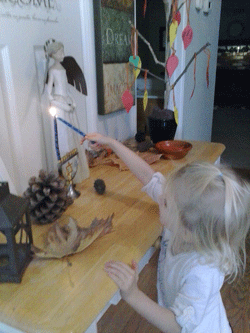 Daily playtime in nature generally provides lots of opportunities to experiment with earth, air and water pretty organically. Just watch as your child digs in the dirt, splashes in a puddle or tosses maple seedling “helicopters” in the air and giggles with delight as they flutter down. Fire is the element we have to more consciously create time and space for in our children’s lives, as our modern obsession with safety has all but eliminated it. Having your child help you build a bonfire on a summer evening is a wonderful way to bring this experience to them in a safe and memorable way. Lighting a candle at mealtime or bedtime is a lovely daily way to honor fire in your home.
Daily playtime in nature generally provides lots of opportunities to experiment with earth, air and water pretty organically. Just watch as your child digs in the dirt, splashes in a puddle or tosses maple seedling “helicopters” in the air and giggles with delight as they flutter down. Fire is the element we have to more consciously create time and space for in our children’s lives, as our modern obsession with safety has all but eliminated it. Having your child help you build a bonfire on a summer evening is a wonderful way to bring this experience to them in a safe and memorable way. Lighting a candle at mealtime or bedtime is a lovely daily way to honor fire in your home.
I’d love to see everyone run outside and begin to build a compost pile so you can have your own direct experiences with the four elements. I do, however, understand that we don’t all have the room or the desire for a compost pile in our backyard! However, I do hope that if you are a parent reading this, you can take a moment to examine whether you can offer your child the gift of experiencing earth, water, air and fire on a regular basis in an authentic way.
Happy summer!
Mary O’Connell is the LifeWays Training Coordinator and President of the Board. She is also a LifeWays Training director and the founder of LifeWays Early Childhood Center in Milwaukee. With delight, she and her husband own Paradise Farm in West Bend, WI, which offers programs for children and adults.
